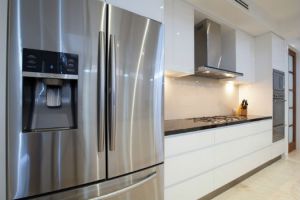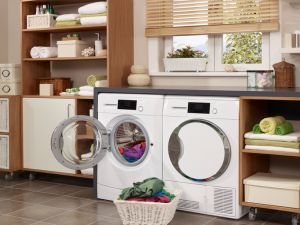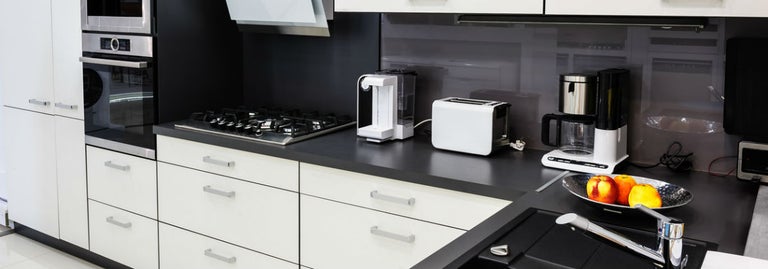From the kitchen to the bathroom, the laundry and living room, the kettle to the television, washing machine and clothes dryer, appliances can collectively make up a significant proportion of household electricity usage.
Indeed, through weight of numbers alone, the cost of running appliances that make up the typical household quickly adds up amid an ever-growing inventory of standby lights, power plugs and remotes, even before taking into account the energy efficiency of each individual appliance.
The Energy Efficiency and Conservation Authority (EECA) has previously found that running household appliances, such as washing machines and fridge/freezers, makes up about 40 per cent of the average household electricity bill.
When considered in this context, buying more energy efficient appliances and operating appliances in an energy efficient manner will over the course of a year likely deliver a household significant electricity savings.
As noted by the EECA, consumers could be losing hundreds of dollars a year because of inefficient appliances, and, with appliances such as fridge/freezers potentially having a lifespan of up to 15 years, this will add up over time.
It may well pay to think long-term in making an appliance purchase, forgoing initial savings in favour of long-term cost-cutting, with a number of consumer guides and services available to assist in making this decision.
 First and foremost, do you need a new appliance?
First and foremost, do you need a new appliance?
Perhaps the first question that should be asked when purchasing a new appliance is if the appliance is actually necessary. Do you really need a third TV? The Ministry of Business, Innovation and Employment’s Smarter Homes website notes of some appliances that they “are just expensive ways of doing jobs that can be done quite easily in other ways”.
The Smarter Homes website observes that: “Before you buy an appliance, it’s worth considering whether you will use it. If you choose not to buy it, you’re saving on purchase and running costs – and the energy, materials and waste that go into the manufacturing process.”
It may well be that a new appliance ends up unused, making its initial purchase uneconomic, or, even worse, with it consuming power while sitting in standby mode.
What are energy rating labels?
As explained via the EECA Energywise website, energy rating labels, found on all new whiteware appliances, televisions, computer monitors and heat pumps available for sale in New Zealand, provide information on the energy consumption of a particular product.
As explained via Energywise: “Energy rating labels provide information on how much energy a product uses, making it easy for you to compare the energy efficiency of similar appliance models.”
Energywise explains that energy rating labels consist of a star rating system, with the more stars a product has, the more energy efficient it is, with the labels also featuring an annual energy consumption (kWh per year), calculated based on average annual expected use.
The annual energy consumption figure helps to make comparisons between different types of products, as a comparison of star ratings for different types of products, such as a different size or model fridge, will not provide the full picture.
Meanwhile, the Energy Star mark is awarded to super energy efficient products. By way of example, an Energy Star-qualified TV uses up to 40 per cent less energy compared to a non-qualified TV.
Energy running costs calculator
The Energywise energy running costs calculator, in conjunction with the energy rating labels, provides further information on usage costs, allowing consumers “to find out how the energy rating affects the amount of energy used, and how much each appliance will cost per year to run”.
Consumers select the appliance by category, entering their usage details, and selecting the appliance’s energy star rating, with an annual energy usage and running cost for the appliance then provided, along with greenhouse gas emissions.
Consumers can additionally add appliances to compare the various annual energy usages and running costs. The running costs calculator calculates annual running costs using 26 cents per kWh.
Appliance operation: Steps for cutting running costs
While purchasing the most energy efficient appliance is the first step to maintaining lower usage costs, a number of additional steps can be undertaken in an appliance’s operation to ensure energy efficiency benefits.
From the kitchen to the home office, the following are some energy-saving steps for commonly used appliances.
 Fridge/freezers
Fridge/freezers
As noted via Energywise, the cost of running a new fridge/freezer over a 10-year period can vary significantly depending on its energy efficiency, with it important to weigh this up against the upfront cost.
Indeed, given that the average lifespan of a fridge/freezer is significantly longer than other commonly used household appliances, consumers should take particular care in ensuring that their chosen model will provide value over the long term.
It should also be noted that a fridge/freezer in most households will generally be running constantly, lending greater importance to energy efficiency.
Among the factors consumers should consider, Energywise recommends fridge/freezer size should be taken into account, purchasing a model at the optimum size for a household’s needs, while noting that additional features such as water and ice dispensers use more electricity.
Energywise additionally notes that fridge/freezers should not be placed next to an oven or in direct sunlight, and should be positioned so that there is an air gap all around, while door seals should be cleaned and checked regularly, and if a model has coils on the back, they should be dusted every year.

Washing machines and clothes dryers
Selecting a washing machine will come down to a choice between top-loaders and front-loaders, with each having their pros and cons, dependent on a household’s requirements and individual model specifications.
As with fridge/freezers, consumers should choose the washing machine model best suited for their individual household requirements. For instance, choosing a large machine that will only be used for regular, but comparatively small, washing loads does not make economic sense.
As noted via Energywise, washing on a warm cycle can use up to 10 times as much energy as a cold wash, with models providing for cold wash cycles ideal, while consumers should also consider a model’s water efficiency.
When it comes to operation, in addition to using cold wash cycles, washing full loads will help save on electricity costs, while for consumers on time-of-use electricity tariffs, scheduling washing for off-peak hours if possible will also help to reduce costs.
When using clothes dryers, lighter loads are better in terms of producing a quick dry. Of course, if a quick dry isn’t needed, drying clothes under sunlight is the most economical solution.
Televisions
Televisions are available in all sorts of shapes and sizes, sporting a variety of different technologies, and when it comes to energy usage there can be a significant difference in different models on offer from different manufacturers.
Consumers should give careful consideration to the size of television suitable for their household, with it noted via Energywise that the larger the screen the more electricity a television will use.
Energywise also notes that there can be big differences in the energy usage of televisions of a similar size, with some using more than three times as much as more efficient models.
Of course, in terms of energy consumption it makes sense to turn a television off when it is not being used, while, as with any product, if it is not going to be in use for an extended period, it is worthwhile unplugging it, rather than leaving it in standby mode.
Computers
Desktop computers and laptops are a common feature in households, however they may be overlooked as a potential electricity drain, and a number of measures can be undertaken to ensure more efficient electricity usage.
Many desktops and laptops have power conservation features, such as standby and sleep modes, which, when effectively employed can contribute to reduced electricity usage, with users needing to set up options tailored to their usage habits.
When it comes to pairing a monitor with a desktop, many different technologies are available, with it worthwhile researching the most effective and energy efficient technology for individual usage, along with considering what size monitor is needed.
When a desktop or laptop is not going to be used for an extended period of time, such as at night, it is worthwhile turning it off at the power point, shutting it down until its next intended use.


Share this article